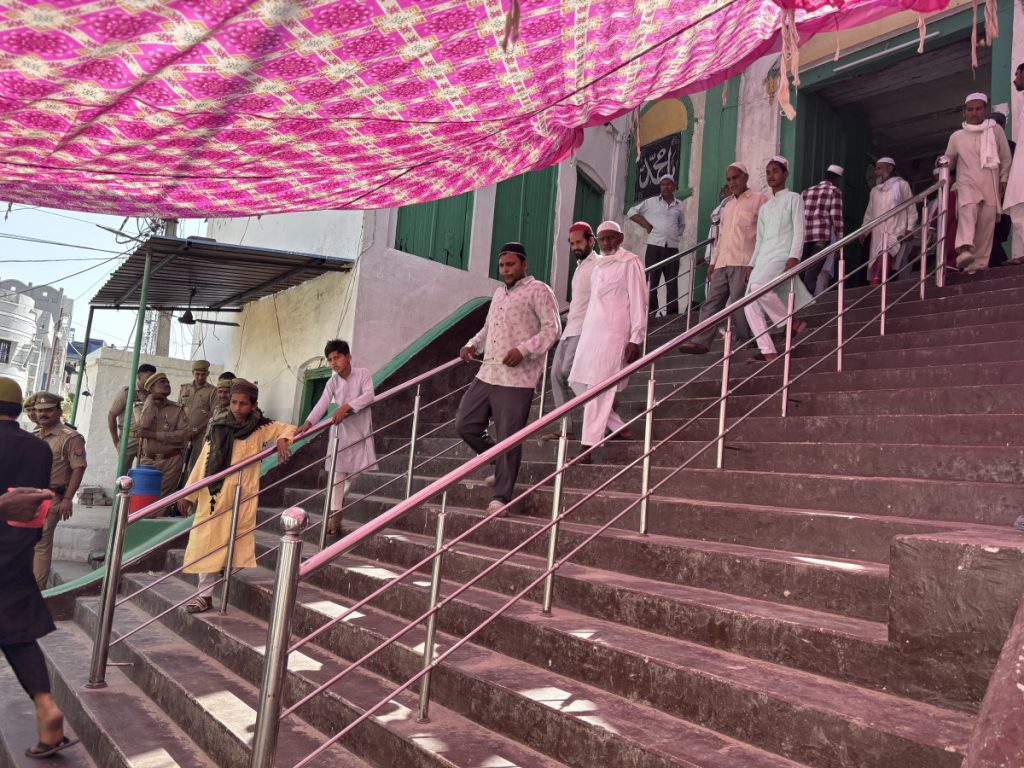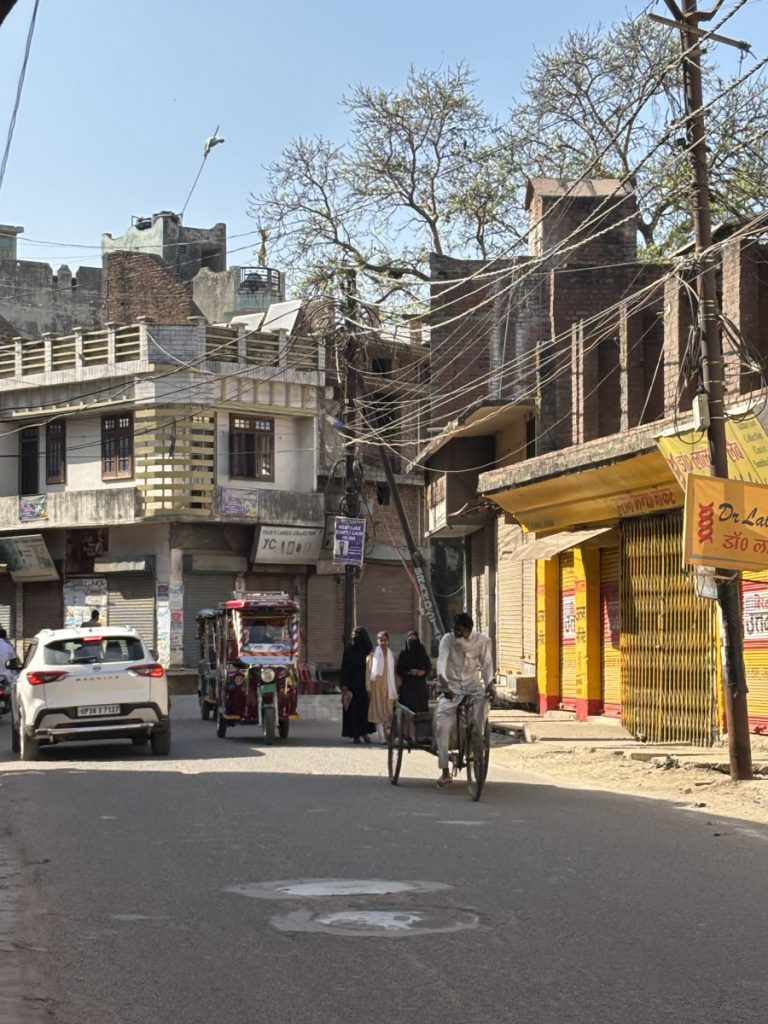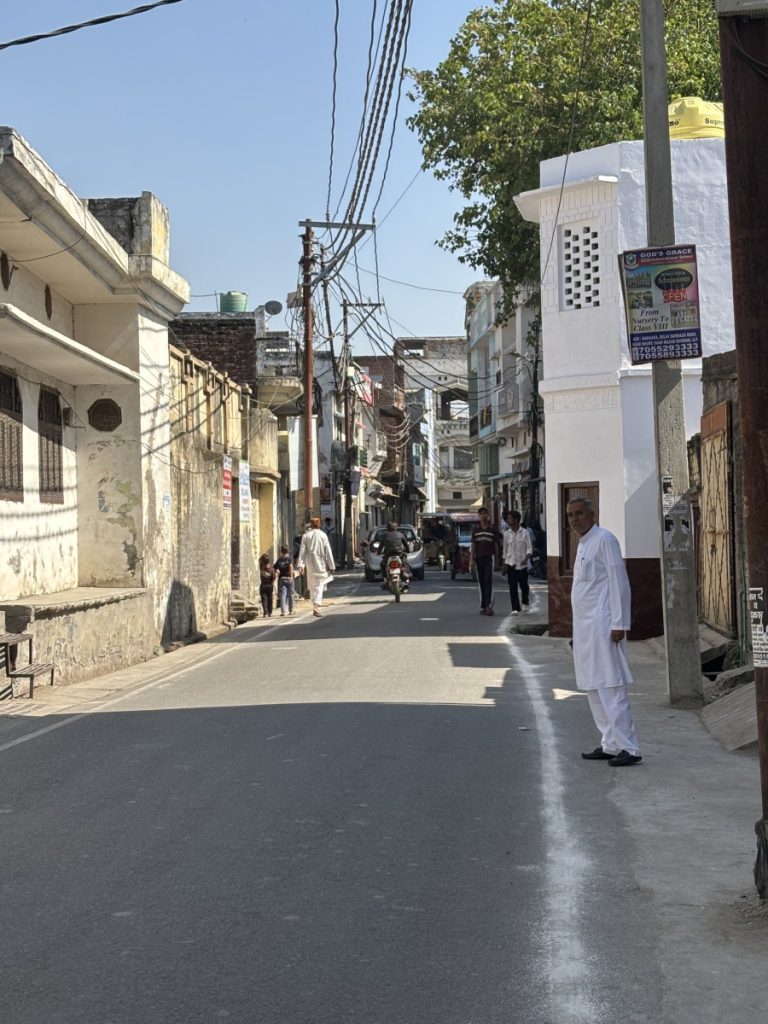In Pain Yet Unbroken: Eid at Sambhal
Sambhal (Uttar Pradesh): Once known for its intricate handicrafts and the irresistible kebabs, Sambhal now finds itself in the national spotlight for a far grimmer reason. Today, its streets are lined not with artisans and traders but with battalions of armed police. The city has been labeled a “sensitive zone,” a place where communal tensions are said to simmer just beneath the surface. The mainstream narrative assures the nation that “peace” prevails, that order has been restored.
But Sambhal residents know the stark reality that this is not peace but silence. It is a silence of dread, the quiet that comes not from harmony but from oppression. The attempts made by the Sambhal administration instead of making the city secure has subdued its intrinsic identity. The state in the garb of maintenance of law and order has tried to instil a deep psychological terror in the hearts of the Muslim community.
A local from Sambhal and a social worker, Suneel Saurabh says, “We realise that the Muslim community of Sambhal is on trial. As a member of the Hindu community, we also feel helpless that it is being done in our name as Hindus.”

Sambhal on Eid. Photo: Vertika Mani.
Siege
The constitution of India guarantees every citizen the right to freely profess, practice, and propagate their religion under Article 25. Yet in Sambhal, an entire community finds itself stripped of this fundamental freedom – not through a single sweeping decree, but through a slow, calculated suffocation of their religious life.
The signs were clear: just before a major festival, the head of the Masjid Committee, a respected elder and a fierce advocate Zafar Ali was arrested. The traditional Neja Mela, a cherished event passed down for generations, was suddenly cancelled. Then came the restrictions on Namaz – no longer could prayers be offered on rooftops or in open spaces. The Eid prayer through the loudspeaker, a call that had echoed through Sambhal for centuries, was silenced, its 45-minute duration deemed unacceptable.
And yet, on the other side of this imposed divide, there are no such restrictions. No loudspeaker-related guidelines for Navratri bhajan and jagrans.

Sambhal on Eid. Photo: Vertika Mani.
Oppression
The events of November 24, 2024 stand as a chilling reminder of how the state machinery has been weaponised. The violence that unfolded that day put the state at a crossroads.
Five Muslims were killed in the violence although the government has only acknowledged the deaths of four persons. Several police personnel were also injured and some vehicles torched or damaged, during a court-ordered survey of a mosque at Sambhal.
The People's Union for Civil Liberties' report makes an important note – what happened in Sambhal on November 24 was not a communal riot but an instance of state repression. Even Sambhal city superintendent of police Krishna Kumar Bishnoi, in his statement to the PUCL, was compelled to admit the truth: "This was not a riot. It was not Hindu versus Muslim. It was Police versus Muslims.”
It was the state administration versus its own people.
Sambhal currently continues to grapple with profound distress, bearing the weight of state-driven narratives and mainstream media portrayals that seek to brand it as a communal flashpoint in Uttar Pradesh. This characterisation not only distorts the city’s cultural and historical identity but also exacerbates the socio-economic hardships its residents were already enduring.
Even before the events of November 24, Sambhal’s working-class Muslim population faced significant economic precarity, with widespread unemployment forcing many to seek livelihoods in Delhi and the NCR region. However, the situation has worsened dramatically in the aftermath of the police violence.
The FIRs filed in connection with the incident – some deliberately vague and implicating “unidentified persons” – have created an atmosphere of pervasive fear. The indiscriminate nature of these FIRs has enabled law enforcement to detain and implicate numerous young Muslim workers arbitrarily, further destabilising an already vulnerable community.

Sambhal on Eid. Photo: Vertika Mani.
The lack of specificity in these FIRs serves a dual purpose: it grants the police unchecked discretion to arrest individuals without concrete evidence while simultaneously instilling a chilling effect among the working-class Muslim youth, who now live under the constant fear of being arbitrarily apprehended. This legal ambiguity has effectively turned an entire segment of Sambhal’s population into potential suspects, making economic survival even more precarious as many are forced into hiding, unable to work or move freely within their own city.
Consciousness of a people
Amidst all these, what has emerged is a remarkable sense of unity. Hindus and Muslims alike have recognised that their fight is not against one another, but against an oppressive force that seeks to divide them. Both the communities are slowly being acquainted with the state’s aim which demands appropriation of their religious sentiments and rights to be in power and therefore every act of communal solidarity, every moment of shared grief and support, is a rejection of the state’s attempts to sow discord.
Even the weight of economic hardship, amplified by mass arrests and the looming fear of wrongful persecution, has only deepened their collective consciousness.
Vertika Mani is a human rights lawyer and activist working with Defenders Bureau on prisoners rights at Supreme Court, currently serving as secretary, People’s Union for Civil Liberties, Delhi.
This article went live on April first, two thousand twenty five, at fifty-five minutes past twelve at noon.The Wire is now on WhatsApp. Follow our channel for sharp analysis and opinions on the latest developments.




